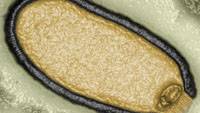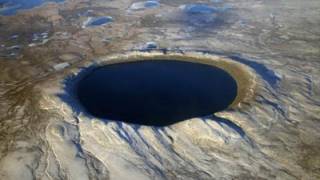Could Giant Viruses Be the Origin of Life on Earth?
Source: news.nationalgeographic.com
The ancestors of modern viruses may have laid the groundwork for cellular life as we know it.Chantal Abergel and Jean-Michel Claverie were used to finding strange viruses.
The married virologists at Aix-Marseille University had made a career of it. But pithovirus, which they discovered in 2013 in a sample of Siberian dirt that had been frozen for more than 30,000 years, was more bizarre than the pair had ever imagined a virus could be.
 In the world of microbes, viruses are small—notoriously small. Pithovirus is not. The largest virus ever discovered, pithovirus is more massive than even some bacteria. Most viruses copy themselves by hijacking their host’s molecular machinery. But pithovirus is much more independent, possessing some replication machinery of its own.
In the world of microbes, viruses are small—notoriously small. Pithovirus is not. The largest virus ever discovered, pithovirus is more massive than even some bacteria. Most viruses copy themselves by hijacking their host’s molecular machinery. But pithovirus is much more independent, possessing some replication machinery of its own.Pithovirus’s relatively large number of genes also differentiated it from other viruses, which are often genetically simple—the smallest have a mere four genes. Pithovirus has around 500 genes, and some are used for complex tasks such as making proteins and repairing and replicating DNA.
"It was so different from what we were taught about viruses," Abergel said.
The stunning find, first revealed in March, isn’t just expanding scientists’ notions of what a virus can be. It is reframing the debate over the origins of life.
Raw Material for Life
Scientists have traditionally thought that viruses were relative latecomers to the evolutionary stage, emerging after the appearance of cells.
"They rely on cellular machinery to help with their replication, so they need to have some sort of primitive cell to make use of that machinery," said Jack Szostak, a biochemist at Harvard University and a Nobel laureate. In other words, viruses mooch off cells, so without cells, viruses can’t exist.
But some scientists say the discovery of giant viruses could turn that view of life on its head. They propose that the ancestors of modern viruses, far from being evolutionary laggards, might have provided the raw material for the development of cellular life and helped drive its diversification into the varied organisms that fill every corner of the planet.
[...]
Read the full article at: nationalgeographic.com
Was the Bible right? All life on earth ’may have come from clay’
Biggest-ever virus revived from Stone Age permafrost






















